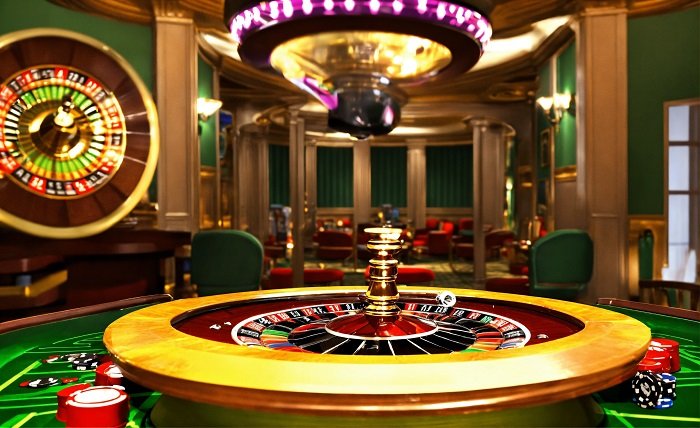Introduction
Historically, roulette has been a game linked with thrill, strategy, and superstition. Many players look for patterns, rituals, and personal beliefs to improve their experience; one of the most fascinating elements of this is the impact of lucky colors. Many people think that choosing or betting on particular hues would increase their odds of winning as across societies colors are seen to have different meanings and energies. The famous red and black of the roulette wheel further accentuate this idea, as players equate these colors with luck, wealth, and personal superstitions. But do these ideas have any factual foundation, or are they just psychological factors influencing choices?
The Cultural Relevance Of Colors In Luck
Many societies give great importance to color symbolism since it shapes beliefs and customs. Red in Chinese culture is seen as a sign of success, happiness, and wealth. Often found in festivals, weddings, and corporate activities, it is a means of drawing good luck. This concept might apply to the roulette table, where players naturally prefer red in hopes that its good connotations will result in wins. For players who attribute value to their decisions depending on cultural and personal beliefs, the presence of both red and black on the roulette wheel produces a fascinating psychological interaction.
Often in Western customs, especially in connections with money and prosperity, green is related to luck. The green zero pockets and the green felt on roulette tables could help to support this view even more. Some players view the zero as a symbol of uniqueness and chance even if it is not often wagered on because of its reduced probability. Though personal background affects the impact of lucky colors, it is clear that color perception shapes how people approach the game.
Color’s Effect On Risk-Taking Behavior
Black is often associated with refinement and control. Players who choose black might see themselves as strategic thinkers who make deliberate bets instead of hasty choices. The different feelings connected to red and black underline the subliminal effect that colors have on players’ psychological condition. Although the physical result of the KING999 game is chosen by chance, the mental and emotional effects of color can quietly affect the whole experience.
Rituals And Superstitions In Roulette
Many athletes create rituals and superstitions they think would bring them luck. Some follow betting patterns depending on numerology and color preferences, wear certain hues of clothing, and carry lucky trinkets. For example, a player who sees red as a lucky color can decide to exclusively gamble on red, skipping black completely. Some people could let outside elements, including their mood, the surrounding environment, or past wins and losses, guide their judgments.
Superstitions sometimes help players feel more involved and confident in their decisions by offering control in an erratic game. Although there is no scientific proof that fortunate colors affect the result of a roulette game, their psychological comfort can improve the enjoyment of the event. Deeply rooted in human civilization for ages, beliefs in luck and fate are not surprising in contemporary gaming.
The Reality Of Chance And Probability
Though fortunate colors have cultural and psychological influence, the truth is that roulette is a game of chance run by mathematical probability. Apart from the existence of green zero pockets, every spin is independent and the chances of landing on red or black are almost equal. Based on luck alone, no color has a greater likelihood of winning; any observed trends are only random events.
Knowing probability can enable players to avoid the trap of thinking that lucky colors affect the game and instead aid them to make educated selections. Although personal tastes and superstitions might increase the thrill, it is crucial to understand that roulette runs only on statistical theory. Every result is uncertain given the randomness of each spin, regardless of the color selected.
Perceived Luck Is Influenced By Design And Atmosphere.
Players’ perception of luck can also be influenced by the surroundings in which roulette is played. An immersive sensation is produced by the wheel’s vivid red and black, the table’s green, and the lighting. Using colour psychology to improve the general environment, many gaming venues design their interiors to inspire sensations of excitement and expectation. The visual attractiveness of the game could lead players to choose particular hues, hence supporting their convictions in luck and wealth.
The presence of other players also affects decision-making. Should a group of individuals frequently bet on red and win, it can motivate others to do the same, thinking that red is now the fortunate option. Even in a game of pure randomization, social dynamics and group behavior help to reinforce color-based superstitions.
Conclusion
Cultural beliefs, psychological biases, and individual superstitions all strongly support the notion that lucky colors affect roulette tables. Although red, black, and green have symbolic implications, they have no effect on the real probability of winning. On the other hand, colour perception’s psychological consequences might affect risk-taking behaviour, confidence levels, and choices. The appeal of lucky colors gives the game more excitement whether players select colors according on tradition, personal experience, or simple choice. In the end, knowing that chance controls roulette will enable players to appreciate the game without succumbing to false beliefs about color-based luck.
